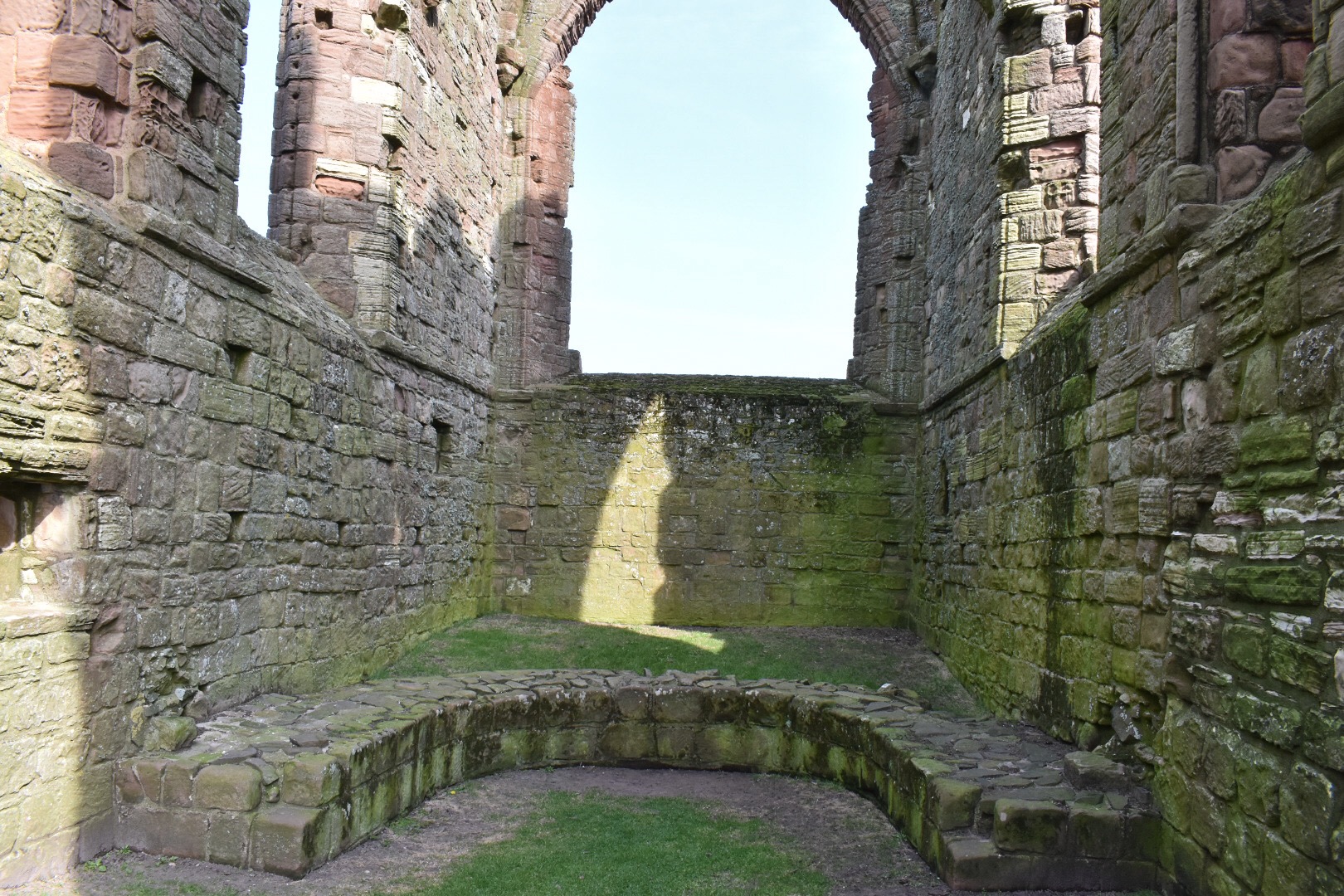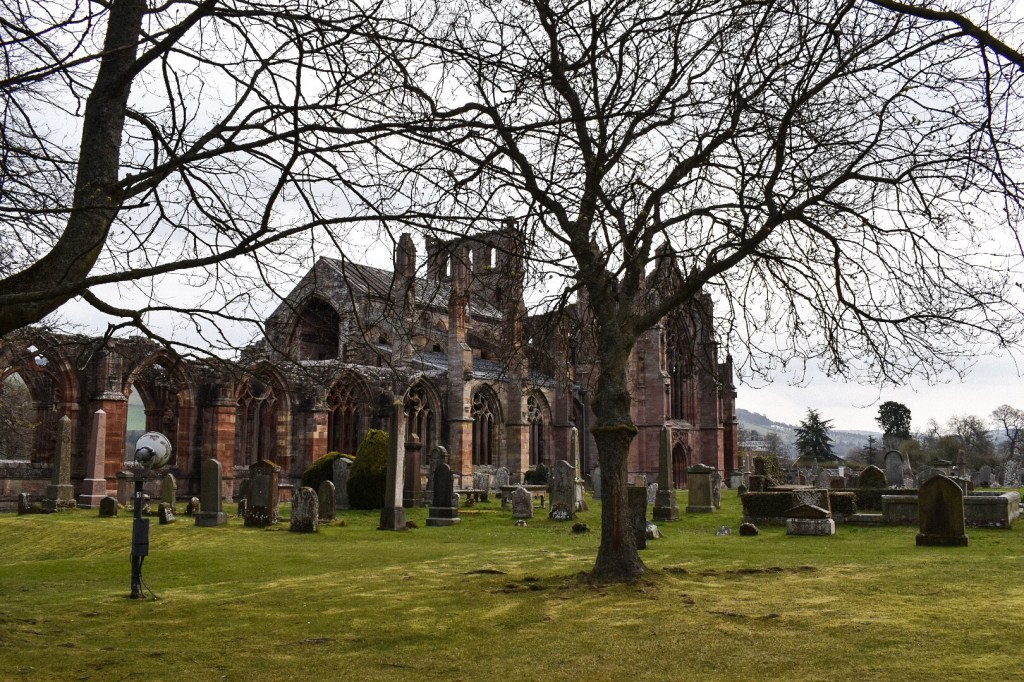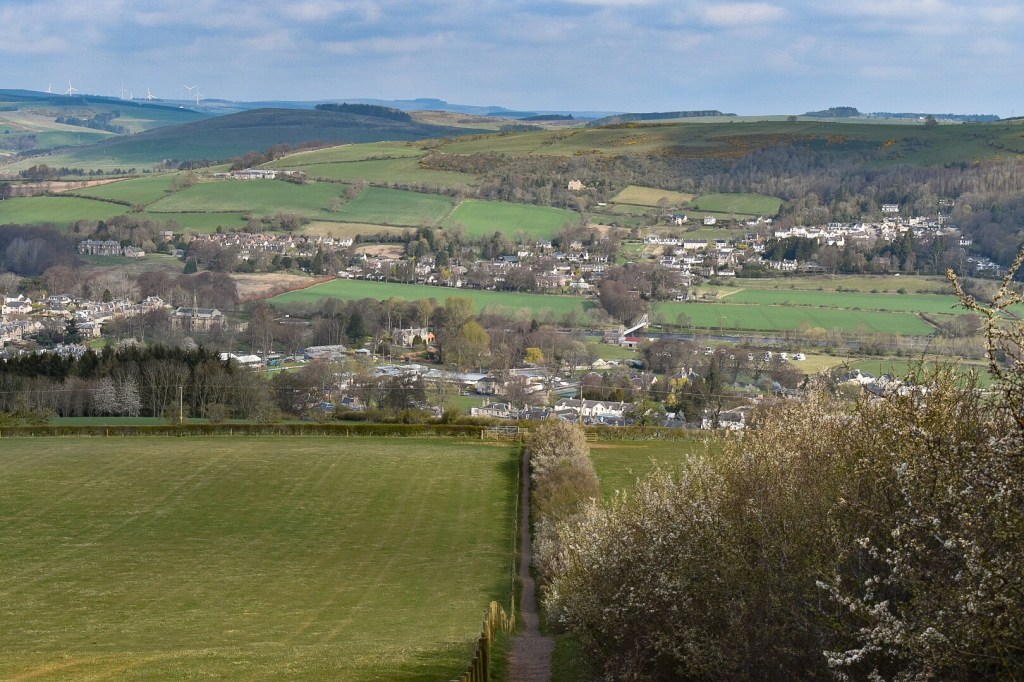We decided day three was a good day to take a break from all day walking. The guidebook informed us that this would be the most strenuous day of walking (although the mileage was less than on the other days). In addition, it mentioned that the path would have “one indistinct section” and “one boggy section”. I wasn’t sure what either of those statements meant in practical terms, but they made me nervous. I was also very stiff from the previous two days. Once I was up and moving I was ok, but the first few steps after standing up were difficult. It seemed like a rest was in order. Our host Clare was kind enough to arrange for a cab to pick us up after breakfast and bring us to our next stop, Wooler. We asked our cab driver about the fields of yellow flowering plants we had seen while walking on the previous days, and he said they’re rape seed plants for canola oil production.
We arrived in Wooler mid-morning (it would have taken us all day to walk; it was a half-hour drive). During our drive we had crossed from Scotland to England. To the best of our knowledge we couldn’t check in to our B&B until mid-afternoon. Wooler is a market town, so we whiled away most of the morning shopping. We stopped at a coffee shop for a snack and wandered through book shops and antique shops. Kathleen found a faux leather jacket that fit her beautifully for £5 (and even better it turned out to be on sale 50% off, so £2.50) in a charity shop. Once we had explored most of the high street we found a pub where we could have some lunch and read for a bit. Then we checked in to our B&B which was also on the high street.

After staying the night in Wooler we headed out for Lindisfarne, The Holy Island. Our difficulty on this day was that one can only cross to Lindisfarne during low tide, which meant between 6:30 am – 12:20 pm. It seemed impossible for us to start walking from Wooler early enough to make it safely onto the island within that window. We decided to compromise and take a cab part of the way, walking from the beginning of the island’s causeway to our hotel, about 5 miles. Our cab driver mentioned that we were not the only walkers who had made this choice. During our ride this morning we passed an industrial park; the first sign of any industry we had seen in the area. Mostly we saw farms, and I had wondered how those who lived in the towns earned their living.

One can walk to the island either along the road or over the sands. The window for walking on the sands is even shorter than that for the road, but the road is narrow and in places doesn’t allow a lot of space for walkers. We opted for the road and were fortunate to find very little traffic on it. It was a luxury to be able to take our time and enjoy walking instead of feeling that we had to hurry to cover ground before the day ended. The weather was beautiful for walking again today. The island was crowded with visitors because of the nice weather.

Our hotel for the night was next to the Lindisfarne Priory, so once we arrived, checked in, and had some lunch, we went out to explore the priory. This priory was built long after Cuthbert’s time. He died in 687; the priory was built in the twelfth century. It is thought that at the time that Cuthbert was the prior the monastery likely consisted of a cluster of huts rather than a building such as this. While visiting the priory we met a few families with children who were on holiday from school.







